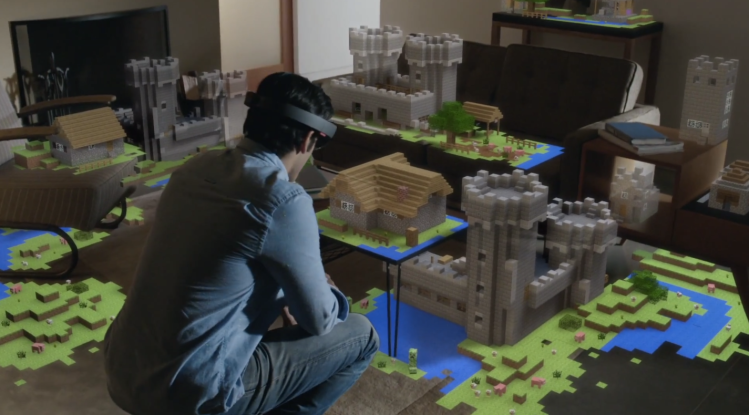At its Build 2015 developer conference today, Microsoft announced the Windows Holographic Platform. In short, the company will let developers turn Windows 10 apps into holograms for HoloLens.
On stage, Microsoft showed a Windows video app that you can simply control with your voice: Just say “follow me,” and the video app moves along as you walk around a room. “Every single universal Windows app has these capabilities,” said Alex Kipman, a technical fellow for the operating system group at Microsoft.
Apps can look like little windows, or they can be more than that. The demo included a photos app, a browser, Skype, a holographic Start Menu, and even a dog on the floor.
https://www.youtube.com/watch?v=kXVW4sUsh3A
Microsoft also showed how Trimble is using HoloLens to help its customers visualize building designs in the context of real world objects and landscapes (shown above) and how medical students at Case Western Reserve University and Cleveland Clinic can learn procedures. Both are done by leveraging holograms in the physical world.
Microsoft announced HoloLens earlier this year. In essence, it’s an augmented reality headset and a wireless Windows 10 device that enables you to see virtual “holograms” in the 3D space around you. The company considers it to be the world’s first, and only, fully untethered holographic computer.
The headset contains a special Holographic Processing Unit. Yet this isn’t a solitary device: The idea is to integrate this technology with Microsoft’s popular Windows operating system — indeed, it was first unveiled at an event to showcase various parts of Windows 10.
Announcing a holographic platform at its developer conference is a no-brainer. Microsoft wants to get developers excited about building apps for the device.
There are naturally huge business applications that Microsoft will undoubtedly push. The company is already partnering with various companies (including Nasa, Unity, Legendary, Autodesk, and Disney) interested in leveraging HoloLens for new ways to collaborate and interact.
“With holograms you’ll have a new canvas,” Kipman said. “Your apps can come to life.”
At the end of the HoloLens presentation, Microsoft showed of a holographic robot projected on top of a physical one. Calling the experience surreal would be a massive understatement.


